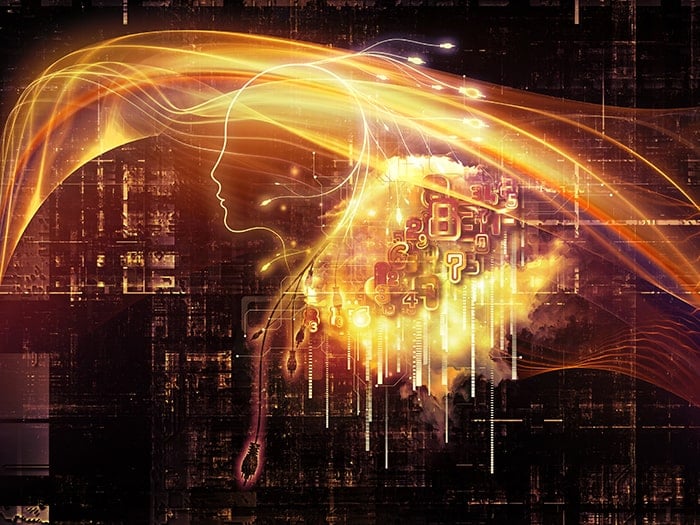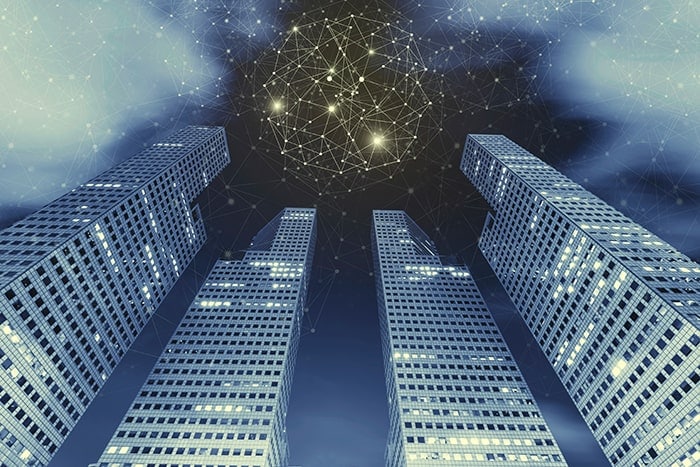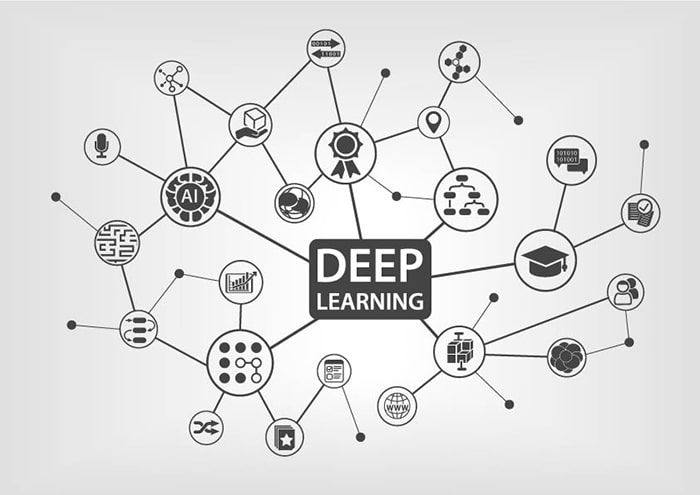No, It's Not a Ghost: AI in Lighting

By Paul Golata for Mouser Electronics
In childhood, there’s always that one building that everyone thinks is haunted—where lights suddenly switch on when someone enters the room, objects develop a mind of their own, and machines magically come to life. Luckily, it’s not a ghost, so no need to call Ghostbusters.
Rather, there's something more logical at play controlling things from a distance. As engineers, we are aware of the advancement of artificial intelligence (AI). AI is a technique that allows computers and machines to emulate human behavior. A subset of AI is machine learning (ML) whereby AI techniques are combined with statistical processing techniques to enable computers and machines to “learn” by making adjustments that improve them on the path toward their goal.
AI is impacting almost every field and application, including the city and spaces we occupy. Smart cities, where intelligent sensing and processing networks along with AI and ML, will endeavor to transform our surroundings and home, work, and play environments. Impacting municipal-wide lighting infrastructure, buildings, utilities, transportation, environment, and communications, smart cities are poised to change how we interact with the world around us.
Some estimates state that lighting accounts for one-sixth (1/6) to one-fifth (1/5) of total present energy consumption. The arrival of AI may enable the commissioning of building lighting control and automation to save money, reduce energy consumption and waste, and improve the level of service quality and customer satisfaction. AI will act as an unseen intelligence providing decision-making capabilities that will help provision future smart buildings. Read on and see how generally invisible AI will help control our visible lighting environments (Figure 1).

Figure 1: AI will impact the future of smart lighting control and automation. (Source: Mouser)
Introduction to Smart Lighting
Smart lighting systems are lighting systems that have communication and control systems integrated into them. The incorporation of these systems allows for potentially greater automation and flexibility. Wireless communication aids in covering vast distances. Control flexibility increases because the overall lighting response can get tuned at three primary points:
- Overall (macro-level)
- Edge (local level)
- Particular (device level)
Smartphones, computer systems, or wall fixtures can operate as control and switching stations. Color or white levels may receive adjustment through the manipulation of red, green, blue, white combinations to provide the specific wavelengths and correlated color temperature (CCT) desired. Output light levels, measured in lumens, can be adjusted to control the amount of optical power delivered by location. Lamps, recessed lights, architectural (indoor/outdoor), signage, and landscape lighting can all be coordinated together within one single system.
AI: Learning and Lighting
I had to go to school for many years to learn all sorts of things. Some things, like my ABCs, I nailed down early, while other things like Quantum Physics and handling Laplace transforms as easily as mathematical addition took me many years to equate.
AI is a significant technology disruptor. One of the characteristics that AI brings to smart lighting is learning. AI allows smart lighting systems to improve their performance in a manner that is analogous to feedback in an electronic circuit. This learning and refinement function is called ML.
ML generally employs a large amount of data. As data is analyzed, the computer is allowed to make decisions. These decisions are called inferences. Inferences are conclusions reached based on evidence and logical reasoning. This type of processing is well-suited for a computer.
The computer system learns by one of three methods:
- Supervised learning
- Unsupervised learning
- Reinforcement learning
Supervised learning employs by providing and comparing the desired best correct answer response (output). Its complement, unsupervised learning, by contrast, does not contain any information regarding what is the desired best correct answer response (output). Reinforcement learning provides appropriate positive or negative feedback based upon what the best correct answer response (output) should be. Because computers have high computational capabilities, they can often make dramatic improvements in their reinforcement learning rather quickly in comparison to humans without the aid of computers (Figure 2).

Figure 2: The future of smart lighting employs AI to emulate human behavior and learn how to operate autonomously. (Source: Mouser)
Adoption
A wide variety of industries are incorporating AI. Banking, retail, automotive, and medical are all industries that have taken a significant foray employing AI within their respective fields. It is evident that although AI will be pervasive, it will be adopted across different industries at different paces. Knowledge and lessons learned in these fields will flow over into the industrial application space over time.
The breadth and scope of the industrial control sector, including smart lighting, is enormous. Organizations with particular and specific knowledge of their smart lighting control and automation parameters will be able to adopt faster than those who have farmed this duty to outside firms. AI and ML implementation is easier for organizations who have initial conceptions of how they should address learning algorithms to tackle the specifics of their organizational challenges and goals. An understanding of the existing system’s limitations and interrelations will provide specific areas in which to focus and apply AI in building lighting control and automation solutions. AI can be tailored to address application-specific areas that the organization desires to control and automate. AI is a tool that has many uses. Like a handyman with a well-equipped tool belt, it has at its disposal a wide variety of contexts and applications that it can apply.
Due to the diversity of activities within the industrial space, common higher-level functions, with the greatest level of return on investment (ROI), will yield the primary market entry points. Areas where human safety and overall security concerns and risks represent large financial exposures will likely be the first industrial areas employing large amounts of AI. Secondarily, industrial AI applications such as smart lighting, where relatively similar level high-level systems can be quickly adapted and modified, represent areas for adoption. Without a doubt, organizations should be looking at and strategizing now as to how AI offers the possibility of increasing efficiency and efficacy.
Behavioral Analysis
Despite the reality that people are difficult to explain, there is little doubt that people are often doing things in a characteristically predictable fashion, even if each particular action has variations or is subject also to a different response and subsequent action. Psychologists and sociologists often get paid to learn how people will respond and act in various circumstances.
Many organizations acknowledge that they are working on incorporating AI and ML technologies into their processes to glean better understandings of what is taking place. One benefit of AI is that it will help human beings analyze their behavior and its interrelationship to other dynamics.
The incorporation of AI and ML techniques allows organizations to use the data from customer habits to learn and respond to various and changing conditions. Past statistical data models are compared to present operating conditions, and adjustments are made to optimize (Figure 3).

Figure 3: AI allows organizations to perform behavioral analysis by analyzing big data and customer and client behaviors. (Source: Mouser)
Building lighting control and automation demands are continually changing, a dynamic process of give and take. Past data usage, when combined with simulations performed of potential forecasted demand consumption, may benefit from AI reinforcement models. Organizations wanting to maximize productivity and reduce costs are incentivized to attempt to achieve an economic edge. The overwhelmingly complicated data of the past, in combination with the forecasted models, provides a real-time flexible answer to meet today’s needs. Because AI is learning, it is continually improving its performance. The sooner one adopts AI and incorporates it as part of the building lighting control and automation process, the sooner it will reach its optimal decision and response level. Flexibility stays inherently high because the AI has learned what and how to adjust the building lighting control and automation variables in response to deviations from optimal performance. The result is that after its adoption, the system’s overshoot is damped and mitigated.
Dramatic changes in usage are also handled. Since the system has learned from a variety of conditions how to respond, any significant increases or decreases in various inputs are handled with first order close and approximately correct responses and then further tuned based on reinforcement feedback. The upshot is that the AI system provides a well-controlled, self-correcting, fully automated, decision-making tool to control building lighting.
Office Automation
AI helps make things automated, meaning it enables systems to operate while requiring little or no direct human supervision or control, which means being able to better commission building lighting control and automation to save money, reduce energy consumption and waste, thus improving the level of service quality and customer satisfaction. A good example of AI in an office setting would be building lighting control and automation changes being implemented as the location of the sun changes throughout the day in synchronization with the measured amount of illumination being received from the sun and adjusted for various locational and output illumination requirements needed by multiple consumers.
Conclusion
While new advances in technology can seem scary for many, I ain’t afraid of no ghosts. We do not need to be fearful of AI. With its arrival, AI will enable the commissioning of building lighting control and automation. AI will assist us in moving in a positive direction to save money, reduce energy consumption and waste, improve the level of service quality, and increase customer satisfaction. And that isn't some imaginary ghost story.